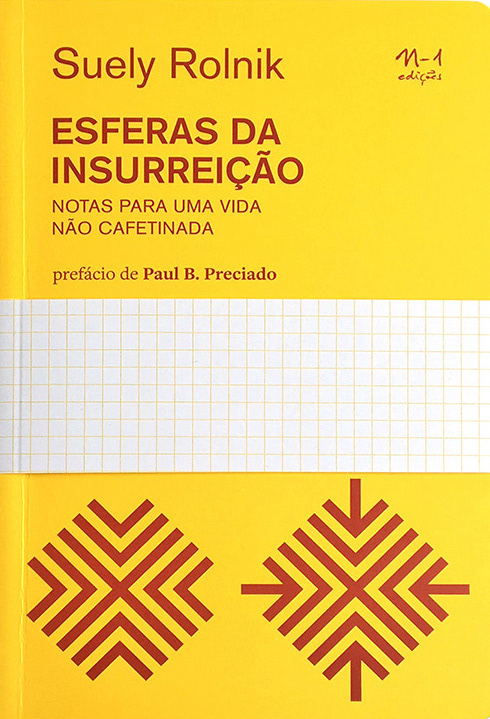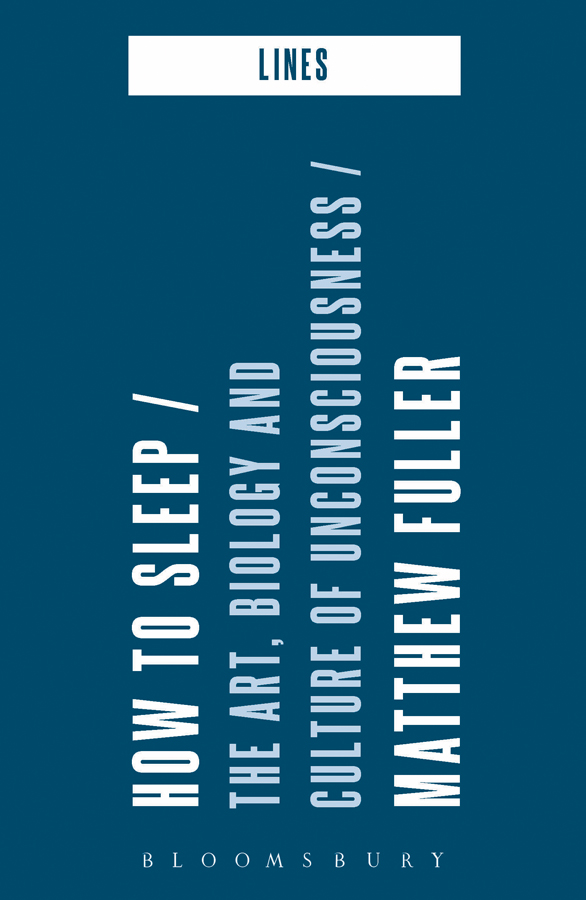Suely Rolnik: Esferas da insurreição: notas para uma vida não cafetinada (2018–) [BR-PT, ES]
Filed under book | Tags: · decolonization, neoliberalism, philosophy, politics, subjectivity, unconscious

“Este livro é como uma belíssima larva que cresce no esterco: a ondulação e a suavidade aveludada do pensamento de Suely Rolnik, seu riso contagioso, a falta de vergonha e de medo lhe permite entrar nas camadas mais obscuras do fascismo contemporâneo, nos guiar nos lugares que mais nos aterrorizam e tirar dali algo com o que construir um horizonte de vida coletiva, uma artista cuja matéria é a pulsão. Uma cultivadora dos bichos-da-seda da “izquierda bajo la piel”. Não se pode pedir mais de uma escritora: devir-larva, cartografar a lama com a mesma precisão com que outro cartografaria uma mina de ouro. Por isso, leitores, adentrem com essa larva no magma da besta e busquem os germens da vida que, ainda que desconheçam, os rodeiam, e que, com uma torção do olhar, poderiam ser seus – poderia ser sua própria vida.” (Paul B. Preciado)
Preface by Paul B. Preciado
Publisher n-1, São Paulo, 2018
ISBN 9788566943597, 8566943597
206 pages
Reviews: Tiago da Silva Porto (IDE, 2019, BR-PT), Alessandra Aparecida Dias Aguiar & Pedro Xavier Russo Bonetto (Filos.e Educ., 2020, BR-PT), Nazaret Castro Buzon (Amazonas, 2019, ES), Maximiliano Reyes (Enclave Comuhae, 2019, ES), Gabriela Cornet (Recial, 2020, ES).
Publisher (BR)
Publisher (ES)
WorldCat (BR)
Esferas da insurreição (BR-Portuguese, 2018)
Esferas de la insurrección (Spanish, trans. Cecilia Palmeiro, Marcia Cabrera, and Damian Kraus, 2019)
Matthew Fuller: How to Sleep: The Art, Biology and Culture of Unconsciousness (2018)
Filed under book | Tags: · aesthetics, biology, brain, dreams, homeostasis, insomnia, sleep, unconscious

“Sleep is quite a popular activity, indeed most humans spend around a third of their lives asleep. However, cultural, political, or aesthetic thought tends to remain concerned with the interpretation and actions of those who are awake. How to Sleep argues instead that sleep is a complex vital phenomena with a dynamic aesthetic and biological consistency.
Arguing through examples drawn from contemporary, modern and renaissance art; from literature; film and computational media, and bringing these into relation with the history and findings of sleep science, this book argues for a new interplay between biology and culture. Meditations on sex, exhaustion, drugs, hormones and scientific instruments all play their part in this wide-ranging exposition of sleep as an ecology of interacting processes.
How to Sleep builds on the interlocking of theory, experience and experiment so that the text itself is a lively articulation of bodies, organs and the aesthetic systems that interact with them. This book won’t enhance your sleeping skills, but will give you something surprising to think about whilst being ostensibly awake.”
Publisher Bloomsbury Academic, London, 2018
Lines series
ISBN 1474288707, 9781474288705
192 pages
Yale French Studies 36/37: Structuralism (1966)
Filed under journal | Tags: · anthropology, language, linguistics, literary criticism, literary theory, philosophy, psychoanalysis, structuralism, unconscious

An early English-language collection of French structuralist writings.
Essays by André Martinet, Philip E. Lewis, Claude Lévi-Strauss, Harold W. Scheffer, Sheldon Nodelman, Jan Miel, Jacques Lacan, Geoffrey Hartman, Jacques Ehrmann, Michael Riffaterre, and Victoria L. Rippere. Bibliographies compiled by Elizabeth Barber, Allen R. Maxwell, Jacques Lacan, Anthony G. Wilden, and T. Todorov.
Edited by Jacques Ehrmann
Publisher Yale University Press, 1966
272 pages
PDF (17 MB)
Comment (1)
